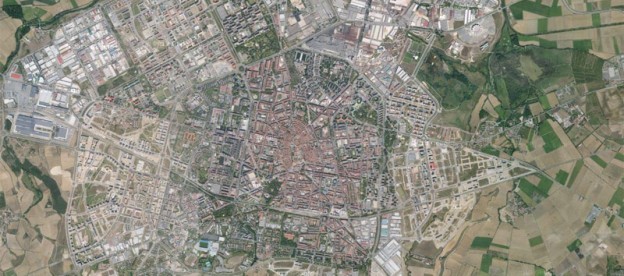
how green are our cities?
Green areas provide a public space for meeting, entertainment and sport, improve the air quality by capturing the CO2 and the suspended particles from the atmosphere, help in the understanding of our natural environment, reinforce the citizens’ identity sentiments, have high aesthetic values and even structure the cities in a functional way. But to be enjoyed by a large majority of citizens, these green areas should be closer to the housing and work areas, ideally no further than five minutes walking, and should have at least 10m2 per inhabitant in their area of influence.
But, in terms of density, quality and structure, all the green areas are not alike. Since a green area can also work as CO2 drain to compensate the pollutant emissions of cars, infrastructures, houses and citizens, it should not only be defined as a public space in relation to the population served, but as a large area which can provide ecosystem services. In addition to this, the green areas can support a flora and fauna more diverse and valued when they are ecologically connected to other green areas nearby: the species living in these areas -like the small mammals and birds- have more possibilities of surviving thanks to the genetic mixing with individuals of other close green areas. What’s more, a green area could also be used for farming and agriculture.
Could we thus define a city as green only for a suitable proportion of connected green spaces with ecological values, regularly laid out into the urban fabric, and accessible to the most of the population? No, but these green areas are essentials to.
The cities have social and human sides that are as important as the natural environment: we could say that cities are the result of the interactions between societies and the environment where they live and grow.
That social component talks us about the model of the city, the natural environment, the exchange of information and the social relationships: building a city is thus up to get living and natural public spaces where the social life can happen. These mixed-use public areas should be accessible to all the citizens and strategies to reinforce the integration of the different social groups are therefore welcome. Green areas are also useful to minimize the energy waste and the acoustic and air pollution, promote the proximity between housing and work with an efficient system of public transportation and pedestrian and cyclist mobility, and offer new opportunities of leisure time for all the citizens. We can evaluate these objectives with indicators to read the social component of the city as a whole image. This work methodology has been developed, among others, by Salvador Rueda and Agència d’Ecologia Urbana de Barcelona for the Indicators of sustainability of Vitoria-Gasteiz or for the Sustainability indicators for the general plan of Seville.
The planning of public spaces as areas for urban life has a lot in relation with the concept of entropy. Taken from the second law of thermodynamics, both the information theory and the statistical mechanics view the entropy as a measure of the random distribution of elements on a system, which reaches maximum values for the systems in state of equilibrium according to their most probable configuration. In the cities, the entropy is a measure of its complexity: the higher the mixing of uses, density and number of elements, the higher entropy and exchanges of information. Thus, a city with high entropy will be more valuable and interesting because the information could be directly transmitted from one person to another, or between the members of a group, even using physical, virtual or digital devices. In other words, a city where people can talk, play and meet other people in public green areas is more lively and enjoyable.
Therefore, how is a green city? How is it defined? In my opinion, we could say that a green city is a sustainable compact city which provides citizens with quality and accessible green areas and public spaces for improving the urban life in its natural and social components. It needs also to be pedestrian and cyclist, energy-efficient, democratic, ecological and mixed-use. Are our cities like that? It seems we are still far from building green cities but some of them are making big efforts towards the sustainability. Vitoria-Gasteiz, European Green Capital 2012, is a good example of it.
More information:
Guía metodológica para los sistemas de auditoría, certificación o acreditación de la calidad y sostenibilidad en el medio urbano, Ministerio de Fomento, Agència d’Ecologia Urbana de Barcelona, 2012, (in spanish).
Modelos urbanos sostenibles, Cat-Med, Observatorio de Medio Ambiente Urbano, Instituto del Mediterráneo, 2012, (in spanish / english).
Sostenibilidad Local: una aproximación urbana y rural, Observatorio de la Sostenibilidad de España, 2009, (in spanish).
Libro Verde del Medio Ambiente Urbano, Ministerio de Medio Ambiente y Medio Rural y Marino, Agència d’Ecologia Urbana de Barcelona, (in spanish).
Cálculo de la entropía producida en diversas zonas de Madrid, José Fariña Tojo, 1976, (in spanish).
Website of the European Green Capital, (in spanish / english).